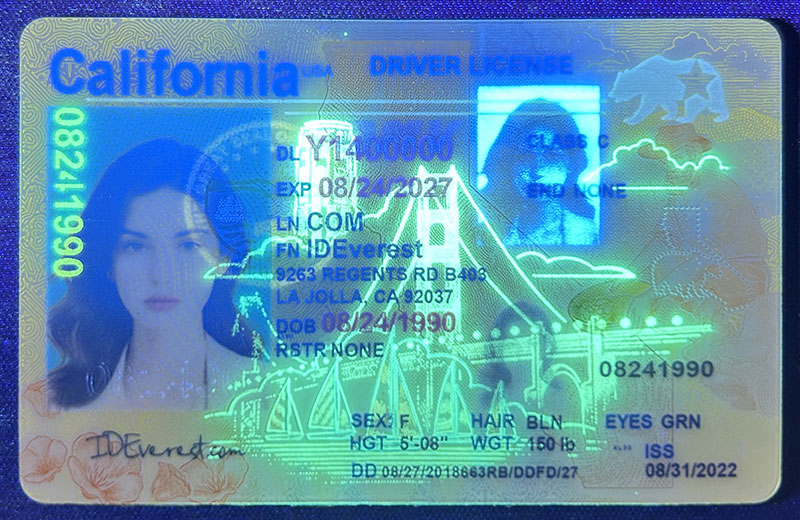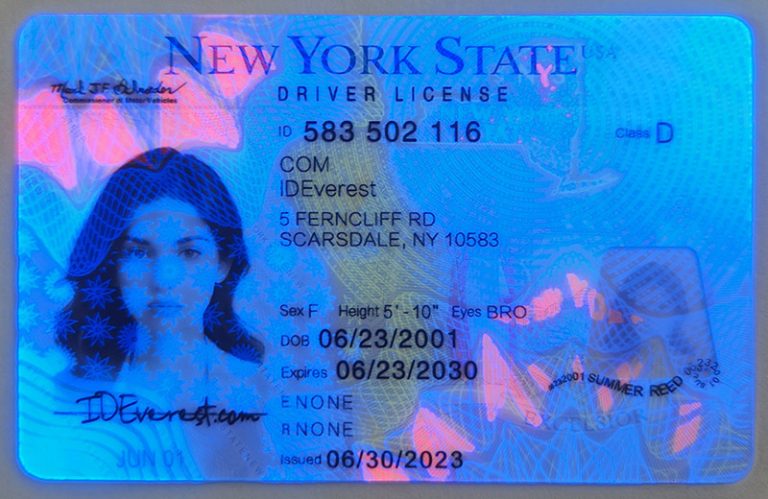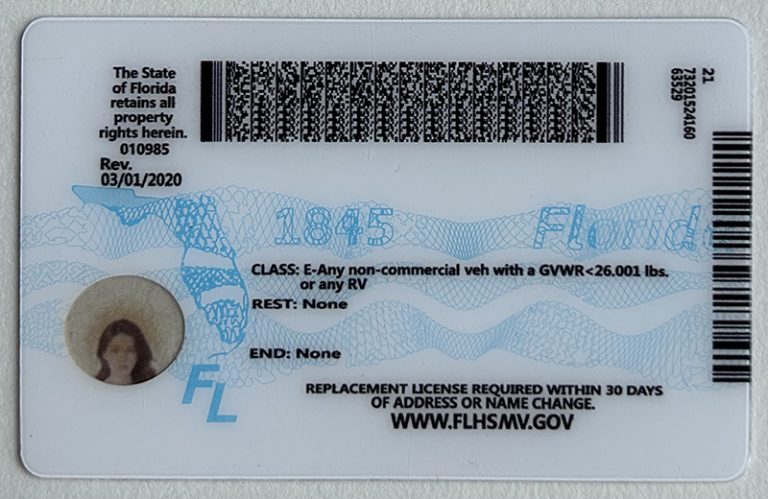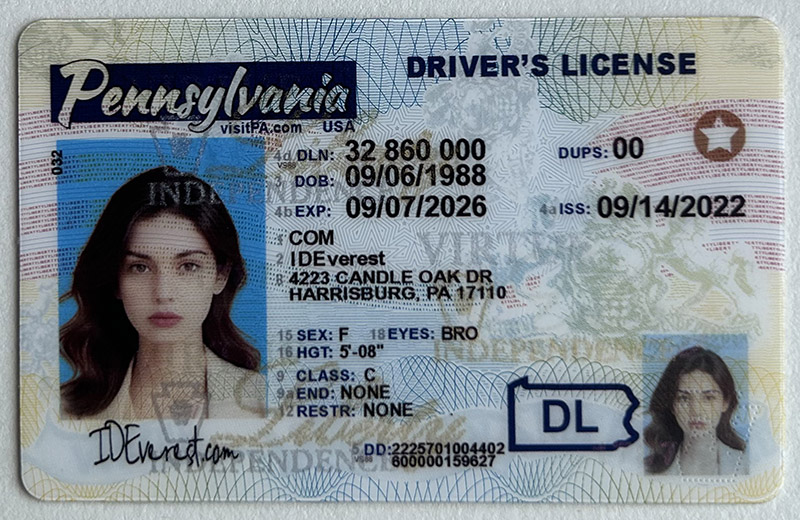How to Spot a Fake ID: A State-by-State Breakdown of Detection Methods
How to Spot a Fake ID: A State-by-State Breakdown of Detection Methods
Spotting fake IDs isn’t as easy as it used to be. I’ve talked to a lot of people who are frustrated by how convincing some fakes are, especially when dealing with out-of-state IDs.
It’s tough, right?
You want to make sure you’re not being fooled, but it’s hard to know exactly what to look for.
In this post, I’ll show you how to spot a fake ID, and what tools you can use to identify fake ID features—whether they’re from your state or out-of-state.
What are some common tools for spotting fake IDs?
When it comes to spotting fake IDs, the challenge is real—especially now that some fake IDs are in such good shape. But having the right tools can make it easier to spot the best IDs, whether you’re a bouncer, bartender, or store owner.
Let’s take a look at some tools that can help identify fake ID red flags.
UV light
One of the simplest tools you can use is UV light. Some states, like California, hide key features that only show up under UV light, like color portraits or holograms.
I've seen it in action firsthand: Shine a light onto an ID, and if the hidden portrait is in black and white instead of color, there's a telltale sign that it might be a fake. The UV light is quick and easy, letting you take a closer look without making it obvious.
Magnification
Have you ever held an ID and felt like something was off, but you couldn't quite put your finger on what?
That's where a magnifier comes in. With just a little bit of magnification, you can spot microprint or texture issues that the naked eye might miss.
I've personally noticed that zooming in on small details like text or edges reveals inconsistencies on poorly made fakes. It's like having a secret weapon that helps you feel more confident in what you're seeing.
ID Scanners
ID scanners are a great choice when you need a quick, reliable check. These devices read barcodes and magnetic strips, instantly confirming the data. If something doesn't line up, you'll know right away.
I've seen scanners work wonders in busy environments — they take the guesswork out of identifying a fake. Let's face it, using technology like this just makes the whole process smoother for everyone involved.
So whether you use a UV light, a magnifying glass, or a scanner, having these tools at your fingertips can make all the difference. It’s about making things simple and giving yourself extra peace of mind. If you really want to spot a fake, these tools are essential.
State-by-State Breakdown of ID Features
Spotting a scannable fake ID requires understanding the key security features used by each state. Let’s take a look at how to spot fakes from some of the major states.
California: Hidden Portrait and Color Check
California IDs include a hidden portrait that shows up under UV light. If you scan the ID and the portrait shows up in black and white instead of color, you’re probably dealing with a fake. Another key feature is the fine line pattern on the card. A real ID will have clear, crisp lines, while a fake ID will often look fuzzy or inconsistent.




New York: Raised Text and Microprinting
In New York, raised text is one of the first things to check. Run your finger across the surface – a real ID will have raised text that’s easy to feel. Fake IDs will often skip this detail or have an uneven texture.




Microprinting, tiny, precise text, also appears on New York IDs. Fakes have a hard time matching the clarity of this feature, so it's easy to spot with a magnifying glass.
Texas: Holograms and color-shifting ink
Texas uses holograms that shift when you tilt the ID. These holograms, combined with color-shifting ink on the Texas star or state seal, make the ID difficult to forge. If the hologram doesn't move or the ink doesn't look right, the ID is probably fake.




Florida: Watermarks and clear windows
Florida IDs have a clear window that reveals an image when held up to the light. If the window looks cloudy or the image doesn't match, you may be dealing with a fake. The watermark should also be clear and aligned—fakes often can't replicate these details.




Other states to watch out for
Illinois: Real IDs feature raised print and a ghost image of the cardholder that changes when tilted.




Pennsylvania: Check for trapezoidal holograms that change color under different lighting.




Arizona: Look for bright colors and cactus-shaped holograms, which are difficult to replicate on fake IDs.




Each state uses unique security features to protect its IDs. Whether it's a hologram, raised text, or UV-sensitive images, paying attention to these details can help you quickly spot a fake ID. Equip yourself with the right tools and keep these tips in mind when checking IDs.
Buy Your First Fake ID Now
Out-of-State Challenges: What Makes It Tough
It's one thing to capture a fake ID from your home state, where you're familiar with the layout and security features.
But what happens when you receive an ID from a state you don't recognize?
That's where fake ID detection can be tricky. Each state has its own design, with different placements for security elements like holograms, UV-sensitive areas, or raised text.
Not knowing these details can make identifying out-of-state fakes much more difficult.
So how do you handle it when you're faced with IDs from all over the country? Here are some things to keep in mind.
Start with the physical tampering
Your first clue is the feel of the novelty ID. A real ID should feel smooth when you run your finger over the surface. If you notice any rough edges, bumps, or small bubbles beneath the surface, that’s a red flag. The lamination should also be intact—if it’s flaking or discolored, you’re likely dealing with a fake.
Watch out for unfamiliar designs
Out-of-state IDs may put you off simply because they look different. Maybe the design doesn’t match what you’re used to. In these cases, knowing some basics about the other state’s layout can help.
For example, some states have clear windows, others use color-shifting inks, and some put their holograms in specific locations. Spotting a fake ID from out of state often comes down to recognizing something that doesn’t look right.
Double-check with digital tools
Don’t try to memorize the details of every state ID—that’s too overwhelming! Instead, use digital tools. There are apps and websites that offer images and detailed breakdowns of IDs from every state. With these resources, you can compare the ID you received to your real ID and look for inconsistencies. It's like having an expert in your pocket.
Out-of-state IDs can be a challenge, but they don't have to catch you off guard. Focus on the physical feel of the card, familiarize yourself with common design elements, and always keep these digital tools on hand. Being prepared can make all the difference when it comes to spotting a fake ID.
What are the most common signs of a fake ID to look for?
As someone who has dealt with a lot of fake IDs, I can tell you that the little details make all the difference. Even well-made fakes are easy to spot if you know what to look for. Here are some signs that often give away fakes.
Mismatched fonts
A common mistake with fake IDs is inconsistent fonts. Real IDs feature a uniform font design across the card. However, fakes often make mistakes. You might notice:
Mismatched sizing: The name may look fine, but the numbers are slightly off.
Different styles: Look for bolding or slanting of the text.
Alignment issues: Text that isn't perfectly aligned is a major red flag.
If the font doesn't feel right, it probably is.
Odd or grayscale colors
Color is another area where fakes often fall short. Real IDs have precise hues, especially around key areas like the photo or state seal. If the colors look slightly off—too faded or too vibrant—that’s a sign you’re dealing with a fake. Fakes often struggle to match the exact hues used in real IDs, so trust your eyes.
Blurry or low-quality holograms
Holograms should move and shine clearly when you tilt the ID. If the hologram looks blurry or faded, that’s a giveaway. In some cases, fake IDs don’t even put holograms in the right place. Here’s what to check:
Sharpness: Holograms should be very clear.
Positioning: Make sure the holograms are in the right place.
Reflection: Tilt the card—do the holograms move as expected under the light?
If any of these details aren’t right, the ID may not be real.
Lamination issues
The quality of the lamination can also give away a fake. Real IDs will have smooth, high-quality lamination. Fakes, on the other hand, often have lamination issues:
Bumps or bubbles: Run your finger over the ID. Fakes may feel bumpy.
Peeling Edges: Lamination that starts to peel around the edges is a telltale sign of a fake.
Discoloration: Look for areas where the laminate looks foggy or faded.
When the lamination feels rough or appears damaged, it’s probably not a legitimate ID.
It’s easy to overlook small details, but these small flaws can be the biggest indicators of a fake ID. Trust your instincts when something goes wrong and always double-check the font, color, holograms, and lamination. Once you get used to spotting these signs, identifying a fake becomes second nature.
The Evolution of Fake IDs
Fake IDs have come a long way. They’re no longer as easy to spot as they once were. Today’s counterfeiters use high-quality printers and materials that make fakes look nearly identical to real IDs.
In the past, identifying a fake was simple — out-of-color photos, mismatched fonts, and cheap lamination. Now, fake ID makers can replicate hard-to-replicate features like holograms, UV-sensitive images, and microprinting. States like California, known for using advanced security features, have seen near-perfect fakes.
The challenge is that these fake IDs can pass a quick visual inspection. But when you use a UV light or scanner, the flaws become apparent. The materials used are also much better, so the fakes feel just as real as the real thing.
Because fake IDs have improved, relying on a quick inspection won’t cut it. You need tools like UV lights and scanners to spot the difference. As fake IDs become more sophisticated, the tools used to catch them need to improve as well.
Fake IDs are getting harder to spot, but using the right tools can help. It’s important to stay up to date and adapt to these new challenges with more advanced detection methods.
Expert Tips for Identifying High-Quality Fakes
Spotting a fake ID is more than just checking the card itself—it goes far beyond that. When dealing with high-quality fakes, sometimes the person holding the ID can give you clues, too. Let’s take a look at some key tips that can help you stay a step ahead.
Watch their behavior
Sometimes, it’s not the ID that gives away information, it’s the person. Pay attention to the individual’s behavior when you ask for their ID.
Do they seem nervous or hesitant when handing over their credentials?
Do they avoid eye contact or appear unusually defensive?
These are often subtle signs that the ID they’re holding may not be authentic. Even the best fakes can't hide shaky responses or hesitations when asked simple questions.
Ask tough questions
When you're unsure if an ID is legitimate, ask for more than just looking at the card. Ask for a second form of ID, or ask for details they should know, like their address, date of birth, or zodiac sign.
High-quality fakes can be eye-popping, but asking these types of questions can trip up the person using a fake ID. If they fumble for details, it's a good sign that something's not right.
Don't rely solely on technology
Here's the tricky part: Some fake IDs are good enough to bypass basic scanners. That's why you can't rely on technology alone.
Manual inspections, like feeling for raised text, looking for inconsistencies in the texture of the card, or using ultraviolet light, are essential to identifying high-quality fakes. Scanners are a great tool, but they're not infallible. A good old-fashioned human inspection can spot things a machine might miss.
Spotting a high-quality fake ID requires more than just a quick scan. Pay attention to the person, ask smart questions, and always double-check manually. The better the fake, the more you'll need your own instincts and attention to detail to catch it.
What are some expert tips for using a high-quality fake ID?
Thinking of using a fake ID for the first time? It can feel a little nerve-wracking, especially when you're not sure what to expect.
But knowing what to look out for can help you feel more confident when presenting your ID.
Let's dive into some expert tips to help you avoid common mistakes and stay calm under pressure.
Stay Cool
The first thing that gives you away isn't necessarily your ID, but the way you act. If you appear nervous or hesitant when handing over your card, it may raise suspicion.
So when you're using a fake ID, stay calm, make eye contact, and act like you've done this a hundred times before. Confidence is key, and it's often the difference between a smooth experience and a difficult one.
Be Prepared to Answer Questions
Sometimes, the person checking your ID will ask you for more details, like your address or date of birth. This is where getting your story straight is really important. Take the time to memorize the information on your fake ID.
If you hesitate or stumble when answering basic questions, it could raise a red flag. The smoother you answer, the more likely it is that your ID will go through.
Don’t Just Rely on Scanners
While many places use scanners to verify IDs, don’t assume that passing a scan is enough. Some high-quality fakes can pass basic scanners but still require manual inspection, such as feeling for raised text or looking for holograms under UV light.
So make sure your fake ID not only meets the standards of a scanner, but also of a closer inspection. Knowing that your ID has all the necessary features can give you peace of mind.
Using a fake ID for the first time can be intimidating, but preparation is your best defense. Know your details, act confidently, and make sure your ID has the right security features. The smoother you present yourself, the smoother your experience will be.
Trustworthy Fake ID Provider: Quality You Can Trust
I get it – buying a fake ID for the first time can make you feel a little nervous. Maybe you’ve heard stories of people getting busted because their ID didn’t pass muster or they chose the wrong seller. But that’s why it’s so important to choose a trustworthy provider.
That’s where ideverest.com comes in. They’ve been around for years, helping people get fake IDs that look real and work smoothly. Whether a bouncer, cashier, or scanner is checking your ID, you want it to look legitimate, and these providers know how to make that happen. It’s all about making you feel confident when you hand over your ID – and they’ve got you covered.
At ideverest.com, they use advanced technology to create IDs that look exactly like real IDs. You get holograms, scannable barcodes, and all the little details that matter. Imagine walking into a club or store, handing over your ID, and not worrying about it for even a second. That’s what an ID you get from them will feel like.
Worried that your ID won’t make it through the scans? Don’t worry. ideverest.com offers a selection of state IDs that look perfect for where you live. Plus, their customer service is awesome, which is really helpful if this is your first time buying a fake ID. They make the whole process easy and smooth.
Buying your first fake ID doesn’t have to be difficult or stressful. With ideverest.com, you’ll get an ID that works and gives you confidence. Imagine feeling cool and calm when you hand over your ID, knowing it’s going to go through without a hitch. Ready to take the leap? These trusted providers have your back.
Buy Your First Fake ID Now
Conclusion: Stay Sharp with Fake IDs
Spotting a fake ID isn't as easy as it used to be. As the quality of fake IDs gets better, it's more important than ever to stay sharp. Being careful and paying attention to small details can make a big difference when inspecting an ID.
Tools like UV lights and magnifying glasses are great for catching things you might miss at first glance. Knowing the specific security features of each state's ID can also help you spot fakes faster. The more you know about how a real ID looks and feels, the better equipped you'll be to spot a fake one.
It's also a good idea to stay up to date on the latest trends in fake ID production. As technology advances, counterfeiters are always looking for new ways to improve their fakes. By staying informed, you can keep up with these changes and be ready to spot the most convincing fakes.
 Nebraska Fake ID
Nebraska Fake ID
 Connecticut Fake ID
Connecticut Fake ID
 Indiana Fake ID
Indiana Fake ID
 Pennsylvania Fake ID
Pennsylvania Fake ID